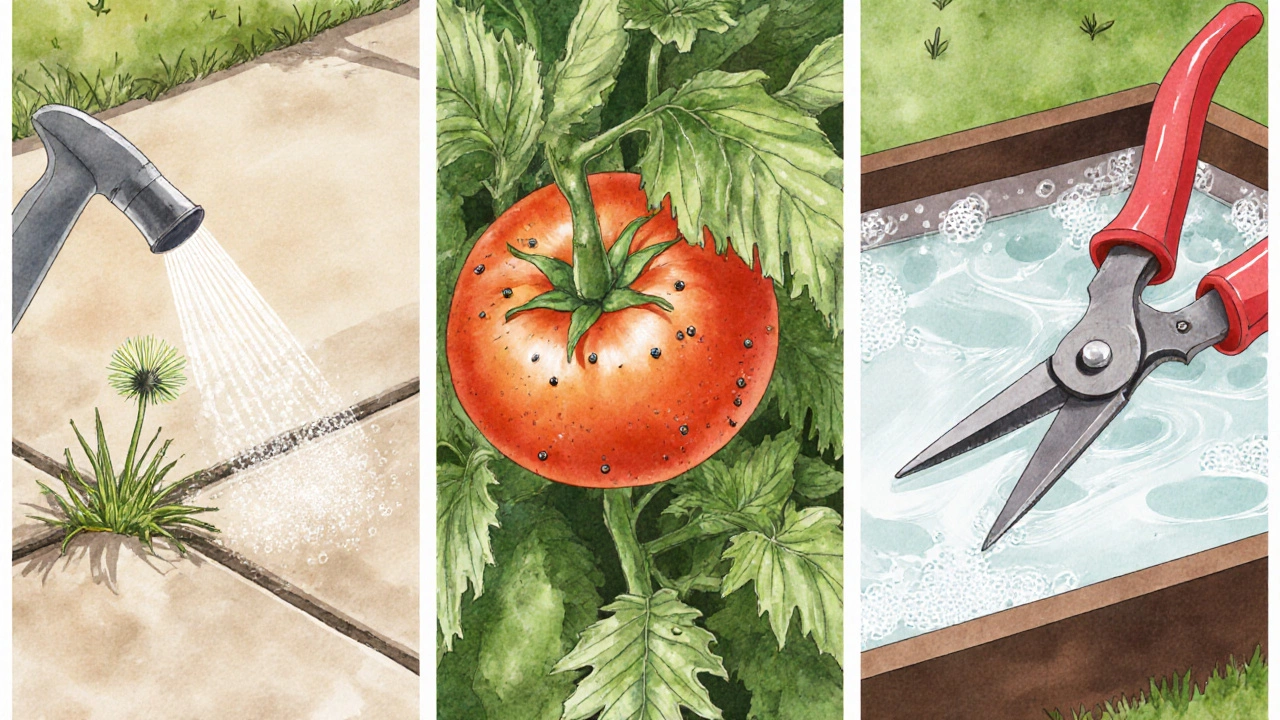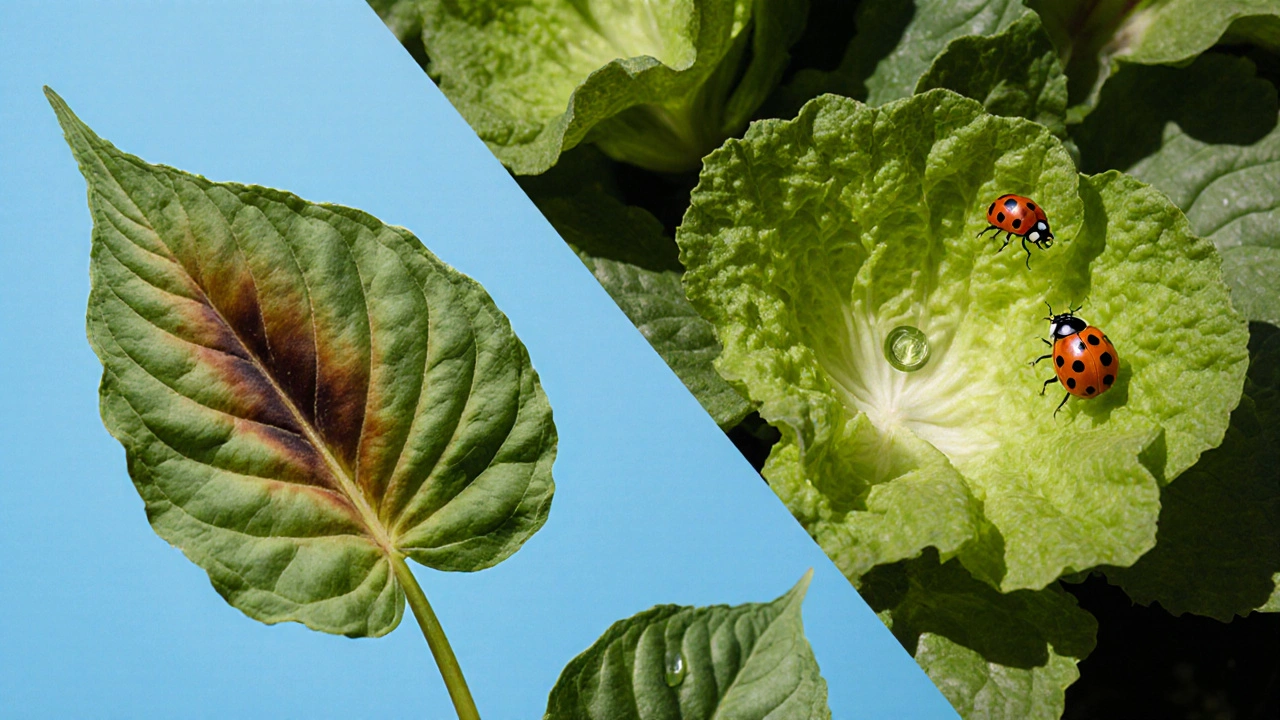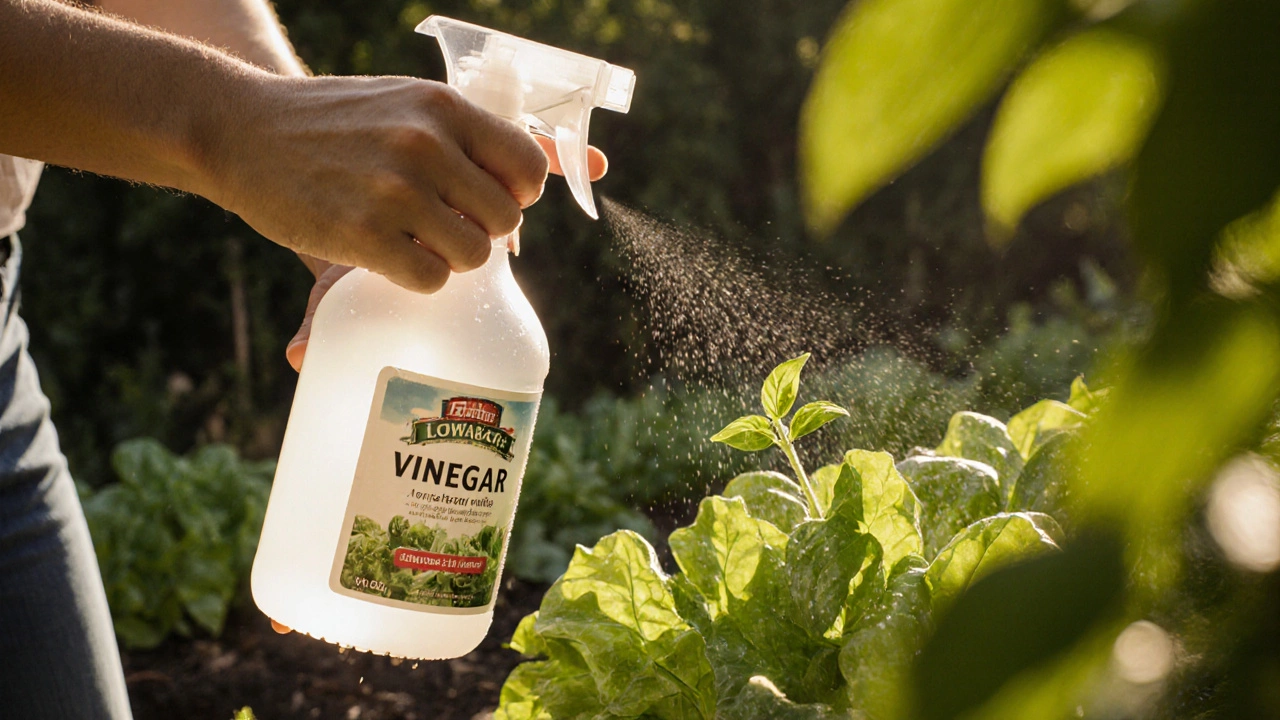Vinegar Dilution Calculator
Enter your plant type and application purpose to calculate safe vinegar concentrations
Enter your plant type and application to see recommended vinegar concentrations
Quick Summary / Key Takeaways
vinegar garden pest control can be a handy, low‑cost tool, but it isn’t a one‑size‑fits‑all solution. Diluted vinegar works well for killing weeds and a few soft‑bodied pests, yet it can scorch leaves, disturb soil microbes, and harm beneficial insects if misused.
What Is Vinegar and Why Gardeners Like It
When most people hear “vinegar,” they picture the kitchen staple used for salads. In gardening, the focus shifts to the active component - Acetic acid is the compound that gives vinegar its sharp bite. Household white vinegar typically contains 5% acetic acid, while horticultural grades can reach 20% or higher. The higher the concentration, the stronger the herbicidal effect, but also the greater the risk to plant tissue.
How Vinegar Interacts With Plant Tissue
Acetic acid lowers the pH of the sprayed surface. When the acid penetrates the leaf cuticle, it disrupts cellular membranes, causing the leaf to wilt and die. This rapid desiccation is why vinegar is effective against many small weeds. However, the same mechanism can cause leaf burn on desirable plants, especially those with thin or tender foliage like lettuce, basil, and seedlings.
Roots are less directly affected because the acid does not easily travel through the soil in the concentrations gardeners typically use. Still, repeated applications can alter soil pH over time, which may suppress beneficial microbes that help plants absorb nutrients.

Safe and Effective Uses of Vinegar in the Garden
1. Spot‑treating weeds in pathways or driveways - a 5% solution sprayed directly onto the foliage can kill annuals within a day.
- Apply on a sunny, dry day for best results.
- Avoid drift onto nearby plants.
2. Controlling soft‑bodied insects such as aphids and spider mites on sturdy leaves (e.g., tomatoes, peppers). A mixture of 2% vinegar, a few drops of liquid soap, and water can immobilize these pests.
- Test on a single leaf first.
- Repeat every 5-7 days if needed.
3. Cleaning garden tools - soaking pruning shears in a 5% vinegar solution removes sap and rust without harsh chemicals.
When Not to Reach for the Bottle
Vinegar is a blunt instrument. Skip it for:
- Plants with delicate foliage (hostas, ferns, seedlings).
- Beneficial insects like ladybugs and lacewings - the spray can kill them on contact.
- Perennial beds where soil pH stability matters; frequent use can make the soil too acidic for earthworms and mycorrhizal fungi.
DIY Vinegar Spray Recipes
- Weed‑killing spray
- 1L white vinegar (5% acetic acid)
- 1Tbsp salt
- 1tsp liquid dish soap (acts as a surfactant)
- Mix, pour into a spray bottle, and apply directly to weed foliage.
- Soft‑bug control spray
- 500ml 5% vinegar
- 500ml water
- 1tsp mild liquid soap
- Shake well and spray on the undersides of leaves where aphids hide.
- Fungal‑spot treatment
- 2L vinegar
- 2Tbsp baking soda
- 1tsp soap
- Use early in the morning; the solution helps reduce powdery mildew on roses and grapes.
Always label your bottles and store them out of reach of children and pets.

How Vinegar Stacks Up Against Other Organic Sprays
| Substance | Typical concentration | Target pests / weeds | Plant safety rating | Notes |
|---|---|---|---|---|
| Vinegar (acetic acid) | 5%-20% | Annual weeds, aphids, spider mites | Low for delicate plants | Fast‑acting, inexpensive, can burn foliage |
| Neem oil | 1%-2% | Soft‑bodied insects, some fungal diseases | High for most vegetables | Acts as repellent, slower kill, pleasant scent |
| Insecticidal soap | 2%-5% | Aphids, whiteflies, mealybugs | Very high for most foliage | Breaks down quickly, safe for pollinators when dry |
| Horticultural vinegar (20%+) | 20%-30% | Established weeds, crabgrass | Very low for any crop | Requires protective gear, can damage soil microbes |
Best Practices & Pro Tips
- Timing matters - spray early in the morning or late afternoon to avoid leaf scorch from intense sun.
- Use a fine‑mist nozzle - minimizes drift onto nearby plants.
- Test before you trust - pick a leaf on the outer edge of a plant, wait 24hours, and see if any discoloration appears.
- Rotate treatments - alternating vinegar with neem oil or insecticidal soap reduces the chance of pests developing tolerance.
- Mind the weather - rain within an hour can wash away the spray, reducing efficacy and risking runoff.
Frequently Asked Questions
Can I use apple cider vinegar instead of white vinegar?
Apple cider vinegar also contains about 5% acetic acid, so it works similarly for weed control. Its darker colour can stain soil, so many gardeners stick with clear white vinegar for a cleaner application.
Will vinegar harm beneficial insects like bees?
Yes, if the spray lands on a bee or a hoverfly, the acetic acid can be lethal. Apply in the early morning when pollinators are less active, and avoid spraying blooming flowers.
How often can I spray vinegar without harming soil health?
For spot‑treating weeds, a few applications per season are generally safe. Frequent use, especially of high‑strength horticultural vinegar, can lower soil pH and suppress beneficial microbes. If you notice a drop in earthworm activity, switch to a milder organic spray.
Can vinegar replace chemical herbicides for lawn care?
Vinegar works well on young, shallow‑rooted weeds but struggles with deep‑rooted perennials like dandelions or crabgrass. For a full lawn, a combination of cultural practices (proper mowing, aeration) and targeted organic herbicides gives better results.
Is there a risk of corrosion on metal garden tools?
Acetic acid can corrode untreated steel over time. Rinse tools with water after a vinegar soak and dry them thoroughly, or apply a light coat of oil to protect the metal.
